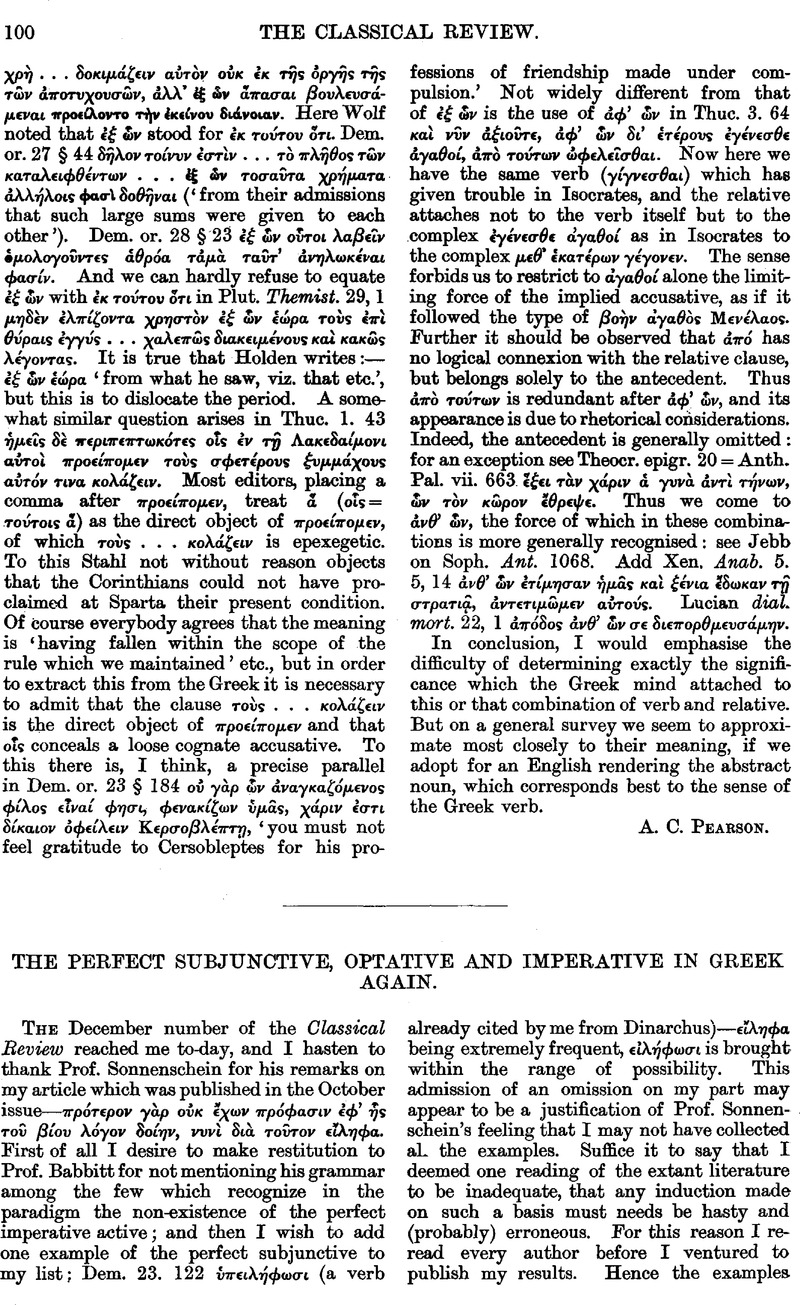No CrossRef data available.
Article contents
The Perfect Subjunctive, Optative and Imperative in Greek Again
Published online by Cambridge University Press: 27 October 2009
Abstract

- Type
- Original Contributions
- Information
- Copyright
- Copyright © The Classical Association 1906
References
page 101 note 1 If the student is not trained to feel πεποιθο⋯η as a present, ἥκοι (Soph. Ai. 186) as a perfect, ⋯λώκοι (Hdt. 1. 83) as a passive, little wonder that he baulks, when he meets reduplicated forms of verbs that have no perfect at all. To form what we call the perfect is only one function of reduplication; and we must not lose sight of this fact (and others), when we are considering the few sporadic cases of the perfect forms of the subjunctive, optative, and imperative. So in Moschus 3 μεμ⋯kappa;ῃ is merely intensive, onamatopoetic, which: is to be carefully discriminated from the ordinary temporal use.
page 102 note 1 The Greek can even say ![]() , and
, and ![]() (Nauck, Trag. Dict. Index, p. 636.)
(Nauck, Trag. Dict. Index, p. 636.)
page 102 note 2 The perfect subjunctive was felt as a compound tense by the Romans. The ideal second person is confined to a few phrases in Greek. The pluperfects in the two languages differ widely. The tendency in Greek is to modal constructions in generic sentences. Insertion of the preposition between adjective and substantive is not permitted in Greek prose. The mobility of the Greek, as contrasted with the stiffness of the Latin tongue, is seen in the use of the aorist in connection with the imperfect. The nominative with the infinitive is a normal construction in Greek. But a multiplication of illustrations is unnecessary.




